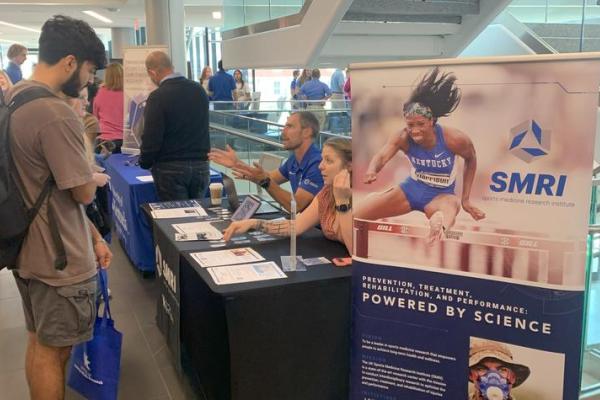Understanding indoor air quality: Insights from CPH student research

Indoor air quality is an important aspect of our health and well-being, yet it's often overlooked. Cole Watson, a University of Kentucky College of Public Health (CPH) undergraduate research student, has been working with a team to analyze data collected to address this crucial issue, focusing specifically on volatile organic compounds (VOCs) in homes in East Palestine, Ohio. The data were collected in response to concern raised by community members about indoor air quality.
Initially on a Health Sciences degree path at UK, Watson learned about public health through a friend's recommendation. During CPH 320 Foundations of Environmental Health course, led by Dr. Florence Fulk, in which Erin Haynes, Ph.D., the Kurt W. Deuschle Professor of Preventive Medicine and Environmental Health and the chair of the Department of Epidemiology and Environmental Health (EEH), was a guest speaker, Watson discovered an opportunity to join her research team.
He had been following the aftermath of the February 2023 derailment of a Norfolk Southern freight train that released toxic substances into the environment, which raised concerns about air, water and soil contamination. The derailment's potential impact on indoor air quality in nearby homes sparked increased scrutiny from environmental agencies and researchers like Haynes, who began studying the effects of such events on indoor air quality.
“I was already following all the updates and doing research on the current situation that the citizens were experiencing,” said Watson. “Once I learned that there was an opportunity to work with data on a topic I had researched and had prior knowledge about, I thought it would be a great opportunity for me.”
Research on indoor air quality
A significant concern following the derailment surrounded the release of VOCs ¾ chemicals that easily become vapors or gases. They are found in many common products and, when released into the air, can enter into homes and buildings nearby.
Watson’s research sought to determine which VOCs were present inside the homes in East Palestine and at what levels in September 2023 and April 2024.
To gather data on indoor air quality, Haynes’ team provided air sampling badge devices to 30 volunteers in East Palestine. Placed in participants' homes for a week, the badges absorbed VOCs in the air which were then analyzed by Wayne State University. Watson then analyzed the data from both time points.
Results have been shared with each study participant. VOCs were detected at each residence at levels commonly found in homes and buildings across the US.
The levels in homes were well below the Environmental Protection Agency’s Reference Concentration (RfC), an estimate of the safe level of exposure of a substance in the air over a lifetime without harmful effects
Throughout the research process, Haynes has remained closely connected with the community, ensuring that residents are kept informed and engaged.
“The results have not yet been published, , but individual result letters have been shared with all participants and the summary from the first round of homes has been provided to the community during a village council meeting. Cole is helping our team prepare the results for publication,” she said.
Haynes said it’s been a pleasure working with Watson on the indoor air quality project and that “he brings new energy and an enthusiasm for learning how to handle exposure data.”
To learn more about the research Haynes is conducting in East Palestine, visit https://cph.uky.edu/research/cares/east-palestine-train-derailment-health-tracking-study.
Research reported in this publication was supported by the National Institute of Environmental Health Sciences of the National Institutes of Health under Award Number R21ES036036. The content is solely the responsibility of the authors and does not necessarily represent the official views of the National Institutes of Health.
More from this series Undergraduate Research
Credits
Words: Stephanie Ramsey (College of Public Health)
Photo provided.

